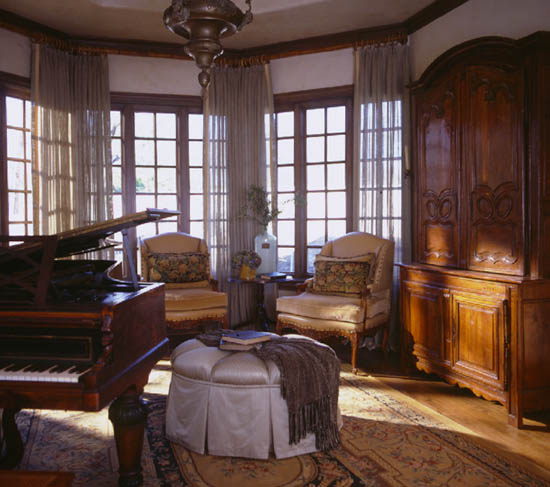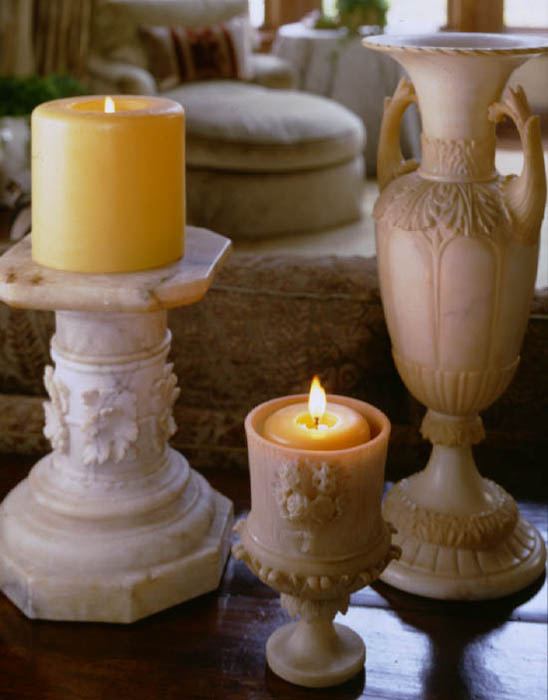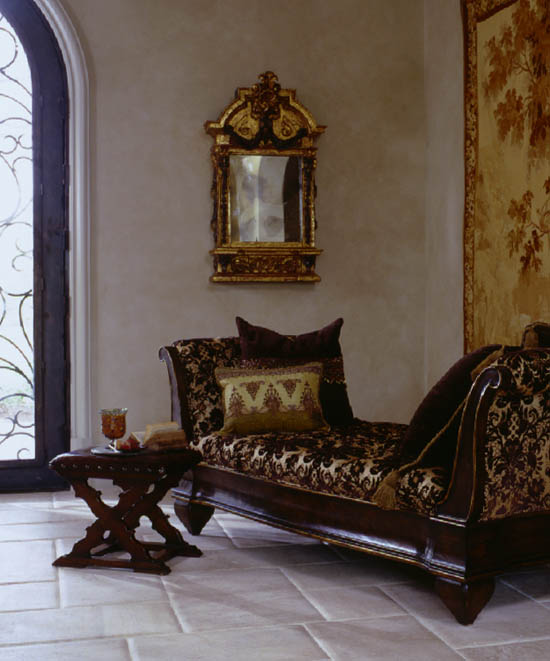Though we travel the world over to find the beautiful, we must carry it with us or we find it not.
Some things never change: We observe, we listen, we learn, yet life is full of deep mysteries. Global economies rise and fall. And like countless Americans before us, we are irresistibly drawn to the beauty of Paris with its historic monuments, ancient fountains, and towering stone façades offering a glimpse of the city’s fabled past. Also igniting passions that we tend to reserve for the arts are the archeological wonders of imperial Rome, fading frescos in Florence, and, of course, Venice’s decorative stonework.
Besotted, in fact, with everything in such legendary places—from the charming, shuttered villas flanked by potted plants to the shop windows filled with lengths of sumptuous hand-loomed silks—it is hardly surprising that we would find inspiration, prompting fresh ideas and hard-to-resist desires.
Little wonder, then, that we surrender to an acquired taste for furnishings with quiet French elegance and the simplicity of the sweet life, or la dolce vita, as the Italians say, virtuously juxtaposing various periods and styles in widely diverse, satisfying rooms that are never dull and predictable, but when revamped call attention to our savoir-faire and recognize the pleasures of our globe-hopping.
These days, no one says a memorable appartement (residential suite) has to be one style, or that a pied-à-terre (the convenient escape from one’s principal residence) can’t be open to disparate, far-flung influences. The long-standing purist look is now last century. Suddenly, mixing furnishings from different eras and the unlikeliest of places is much more chic.
Taking advantage of today’s creative freedom, we rely on our instincts for defining bon goût and gathering important objets d’art, glittering rock-crystal chandeliers, graceful iron gates, whatever, from assorted nations but most notably Italy and France. Conventional wisdom has it, after all, that the unerring style of these countries stems from the elegance of their people, habitués forever synonymous with timeless good taste, sophisticated assurance, decorative ingenuity, and startling panache. As Shakespeare sagely pointed out, “What is the city but the people?”
So it follows that, equally influenced by the Italians and the French, we justly praise the accoutrements that set their worlds apart: dramatic architecture, celebrated cultures, well-tended gardens, and strong classic interiors.
Daringly then, we fuse the very influences for which the French and Italian people are known, artfully sculpting uniquely American visions of twenty-first-century uptown living with, at best, breathtaking creativity and astonishing harmony and warmth.
Betty Lou Phillips, ASID
Author and Interior Stylist

Strains of composer Claude Debussy’s “Clair de Lune” waft from the ivory keys of the Playel piano, circa 1854, as other handsome French antiques—Louis XV chairs, the vintage light fixture, and an eighteenth-century buffet à deux corps —add to the elegant tone. Music room drapery fabric is from Great Plains; the trim is by Clarence House. The ottoman is from the Cameron Collection at George Cameron Nash, Dallas.

Topping the sofa table is a collection of antique alabaster. Volterra is the center of alabaster carving in Italy, with quarries surrounding the Tuscan city. The Etruscans were the first to sculpt chalk-white alabaster urns, which were ideal for holding the ashes of their dead.

In an entrance hall with the architectural trappings of a grand palazzo, a récamier wearing a suggestive Quadrille carved velvet is rife with the romance of an earlier era. In 1805, Napoléon exiled the provocative Madame Récamier, who offered inspiration for this piece. However, after Napoléon’s defeat at Waterloo in 1815, she returned to Paris and resumed her salon. On the villa wall hang an Italian mirrored niche from the eighteenth century and a nineteenth-century tapestry.